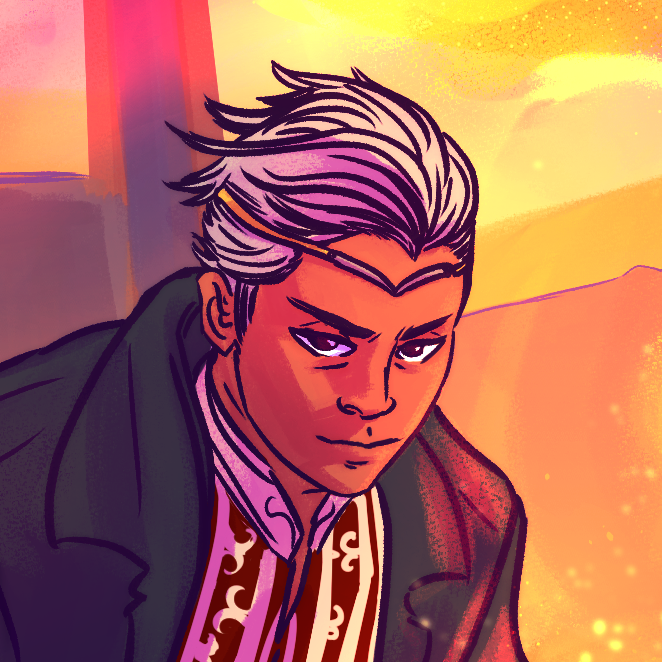Home
Home is, for many Edenians, the ultimate refuge from the world. More than just its physical form—be that quaint cottage, heartwarming house, or palatial estate—“home” is a state of mind. Home is comfort, home is safety, and home is freedom—both the freedom to control one’s surroundings and the freedom to express the most unique aspects of one’s self.
Sadly, some who are lucky enough to have a roof over their heads feel as “homeless” as the unhoused. Whether that’s the result of restlessness, dissatisfaction with a living situation, or fraught interpersonal dynamics, they don’t feel like they belong where they are.
Fortunately, in the post-apocalyptic paradise of Eden, strange forces are at work to make sure that no one who wants a home is without one for long. Some chalk this up to divine intervention by the goddesses Mira and Phina, while others feel that the people of this place—for all their faults—ultimately want their fellows to be happy, and that they will do whatever they can to make that happen.
Home Styles in Eden
Though many Edenians live in structures which have existed since the creation of this place by the goddess Phina, building a new home is not unheard of. And of course, given that the peoples of Eden have come from all across the cosmos, that leads to an eclectic mix of architectural styles and design philosophies. Here are just five examples.
The Halfling Iwo
The halfling iwo is built exclusively from rock, wood, and grasses or leaves from the surrounding area. Nothing may be used that cannot be carried to the building site by a single halfling in a single day, and no structure may rise higher than the tallest tree in the village.
The iwo’s floor is raised off the ground by stones or wooden stilts, both to prevent flood damage and to keep critters out. The walls of the structure are generally more open than not, allowing for natural cooling. And the thatched roof is thick, protecting the inhabitants from rain and other forms of precipitation.
Given that the ancient halflings of Earth-665 were primarily a nomadic people, most iwos are strikingly similar to each other. The idea was that, when you were ready to move on down the road, the iwo you built would be ready and waiting for the next traveler to use. Keeping the design and layout of each iwo consistent was a courtesy to the wider halfling community.
The Bekiskapan Domus
Resembling the ancient Roman domus of other iterations of reality, the Bekiskapan domus is a rare but beautiful style of home. Centered around a large atrium with an open roof and a pool to gather rainwater, the Bekiskapan domus is a home without closed doors—except, of course, for the one out front that leads to the outside world.
The Bekiskapan were not a shy people, after all.
Beyond the atrium, each domus includes a dining room, a kitchen, and two large bedrooms—one for the adults and one for the children.
The Elven Lodge
The elven lodge is a large communal living space centered around 7-story-tall lobby. The soaring ceiling is supported by intricately carved totem poles and is meant to evoke the unspoiled wilderness. Architecturally speaking, it is reminiscent of Earthling lodges found in the National Parks of the United States. Built entirely of wood and stone using post-and-beam construction techniques, there is not a scrap of iron to be found anywhere in the structure.
The Dwarven Jaw
The dwarven jaw is a magnificent structure built entirely from stone. The most glorious of these are rock-hewn monoliths carved either from one freestanding rock of sufficient size, or else carved into the side of a hill or mountain. If you’re looking for rough equivalents from the real world, check out “15 Magnificent Structures Built From Stone,” a 2019 article from Architectural Digest.
The Kíndallan Fegdoo
The kíndallan fegdoo is a pentagonal structure with a person-shaped sleeping receptacle in each of the five corners. Many of the shape-shifting kíndallans, it turns out, prefer to rest in a container that will keep them from shifting forms while asleep.
An interesting fact: a fegdoo can be one floor or multiple floors, but if it has multiple floors the total number of floors must be a multiple of five.










I love the descriptions of the different kinds of houses! How delightful. :) And well-grounded in your peoples' cultural beliefs.
Thank you! Had fun doing research for this one. Glad it paid off!